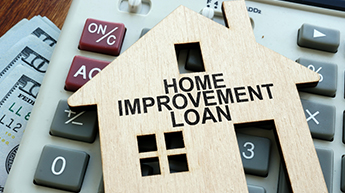Home Improvement Loans with Bad Credit

Are you thinking about some home renovations or improvements but don’t have enough money? And what if your credit score is lower than the lender requires? It’s time to learn that it is not a problem anymore!
You can get home improvement loans for bad credit scores and renovate your house as you wish. Don’t know where to go for renovation loans with low credit? 15M Finance will spill the truth about these loans and their features that help you get extra dollars for your home project.
Table of Contents
- What are Home Improvement Loans?
- Are Bad Credit Home Improvement Loans Real?
- How to Get a Home Improvement Loan with Bad Credit?
- Bad Credit Home Improvement Loans vs. Home Equity Loans
- What Do I Need to Qualify for a Bad Credit Home Improvement Loan?
- How to Compare Home Improvement Loans with Bad Credit?
- Home Improvement Loan Alternatives for Bad-Credit Borrowers
- Frequently Asked Questions
What are Home Improvement Loans?
Home improvement loans are financial tools you can get to fix up your house. You can borrow money to upgrade your home, whether for a kitchen remodel, a new bathroom, or even for new landscaping. These loans can help you finance the home improvement projects you’ve been dreaming about but don’t have the cash for upfront. So, you can make your place look awesome without emptying your wallet.
Are Bad Credit Home Improvement Loans Real?
Yes, they exist! Bad credit home improvement loans exist for borrowers with not-so-great credit scores who still want to improve their homes. These loans allow people to borrow cash for much-needed renovations, even if their credit history isn’t top-notch.
Potential borrowers must remember that the interest rates might be high, and they might undergo other verifications to prove their steady income. However, it’s more straightforward than borrowing through a bank or credit union.
How to Get a Home Improvement Loan with Bad Credit?
It’s crucial to understand that getting a home improvement personal loan with bad credit might require extra effort. Lenders tend to be cautious when lending to an applicant with a bad credit score. But it’s not impossible, so let’s get started.
Know your credit score: It’s time to find out your exact credit score. Check your credit report. You can do it once a year completely free. Look for any errors that might be dragging your score down. If you spot any mistakes in your credit history, fix them as soon as possible. Get a co-signer: If your credit score is low, consider getting a co-signer with good credit. If you can’t make the payments, this person will be responsible for the loan. It’s a big ask, so ensure you’re confident in your ability to repay the loan. Improve your credit score: Most lenders have minimum credit score requirements. They want at least a fair FICO score (580 – 669). Pay your bills on time, keep your credit utilization low, and avoid taking on new debt. Over time, your credit score will gradually climb, making it easier for you to secure loans in the future.
More: You can find more information about the process of getting $750 loans here.
Bad Credit Home Improvement Loans vs. Home Equity Loans
Do a home improvement personal loan and a home equity loan look the same to you? It’s all because you don’t know the main differences between these two loan products. To choose the right way of funding for your home improvement project, let’s compare them:
Collateral
Bad credit home improvement loans are designed for folks with less-than-perfect credit scores. The good news is that these loans are typically unsecured, meaning you don’t have to use any collateral (like your home) to secure the loan. That’s a plus if you’re worried about potentially losing your house.
Meanwhile, home equity loans are backed by the value of your home, so you’re essentially borrowing against the equity you’ve built up.
Interest Rates
Since home improvement cash loans are designed for consumers with bad credit, they often come with higher interest rates. That means you’ll end up paying more in the long run.
But one of the most significant advantages of equity loans is that they typically come with lower interest rates. That means you’ll save money on interest payments over time.
Loan Amount
The bad credit loan amounts might be smaller than you could get with a home equity loan. So, while they can be a viable option for those with bad credit, you must carefully consider if the amount is enough for your plans.
Home equity loans often offer higher loan amounts, allowing you to tackle larger projects or make multiple improvements at once. You’ll have a bigger budget, which can be a game-changer when transforming your home.
What Do I Need to Qualify for a Bad Credit Home Improvement Loan?
You must first meet the basic requirements to increase your chances of getting loan approval. They may vary by lender, but here is the typical list of criteria to check before applying for home improvement personal loans:
Be at least 18 years old and have a valid ID card; Have a steady income (at least $1,000 per month) and bank account; Email address and phone number.
Also, while applying, you can highlight your positive points. Your credit might not be stellar, but you’ve faithfully paid your bills on time. Show off those good qualities and convince the lender that you’re not as bad as your credit score suggests.
Consider starting with smaller projects that won’t break the bank. This way, you can build a track record of timely payments and improve your creditworthiness. So, you’ll take small steps toward your home improvement goals.

How to Compare Home Improvement Loans with Bad Credit?
We know you want to find the best home improvement loans but don’t know how. Don’t worry! 15M Finance gives you a short checklist when searching for unsecured home improvement loans.
Application Process
Find lenders that have an easy application process for such loans. Usually, it is completed online on their website or offline at their offices. Ask the branch manager to help you fill in the loan request form. It should take up to five minutes to provide all the needed information.
Annual Percentage Rate
Like an interest rate, the annual percentage rate is expressed in percentages. It’s the yearly cost of your home improvement personal loans, including fees and lender’s charges. The APRs for these loans range between 6% and 36%. You can prequalify for a loan and determine your interest rates.
Minimum Loan Amounts
Each lender has different loan amount ranges. Some of them can provide you from $1,000 to $5,000. Meanwhile, others allow you to borrow from $5,000 and more, depending on their minimum credit score requirement.
Down Payment
You should avoid down payments when looking for the best home improvement loans. It is an upfront initial payment before making other loan payments.
Monthly Payments & Terms
You must know that a home renovation loan is covered with fixed monthly installments during a set repayment schedule. Usually, these unsecured personal loans have different terms ranging from 12 to 36 or 60 months.
Funding
A fast direct deposit is what you need to start your home improvement project. That’s why search for a lender that transfers the money within one business day. However, it also depends on your bank cut-off times and the lender’s workload.
Home Improvement Loan Alternatives for Bad-Credit Borrowers
Don’t want to deal with high rates because of your credit score? There are still some home improvement loan alternatives that can help you turn your renovation dreams into reality. Let’s dive into a couple of options that might just do the trick:
FHA 203(k) Renovation Loans
When applying for a 203(k) loan, the borrower refinances the existing mortgage and rolls home improvement costs into the new mortgage. The applicant must have no foreclosures within the past three years to qualify for the lender’s requirements.
Usually, getting 203(k) loans is time-consuming because of the application. You must work with a mortgage lender to pre-qualify. After this, you need to contact a general contractor to create a scope of repairs and call a HUD consultant to make a complete inspection of your home.
Credit Card
Your credit card is a quick way to pay for home improvements. You can get a 0% APR credit card with an introductory period without interest rates. Just take care not to exceed your credit card limit.
Family Loans
You can always rely on your family members. Borrowing from your parents, siblings, or cousins could help you cover improvements expenses. Family loans don’t require good credit, allowing you and your friend or relative to decide on interest and repayment terms. You must keep the agreement and avoid damaging your relationships.
Frequently Asked Questions
What credit score do I need to get a home improvement loan?
Usually, lenders request you to have a fair credit score (from 580 to 669). However, if you have a lower FICO score, search for bad credit direct lenders that will provide you with 500 credit score loans for your home improvement.
How much can you borrow in a home improvement loan?
It all depends on the lender you apply through and your improvement expenses. Some of them can lend you up to $5,000; meanwhile, others can allow you to get up to $15.000.
Can I get a home improvement loan with bad credit?
Yes! Just ensure you find a loan provider that works with bad credit scores. Remember that such loans will have higher interest rates than those with good credit.
When is a home improvement loan a good idea?
It is a good idea only if you don’t have enough budget to cover the renovation expenses and are sure that you can repay the loan on time.
